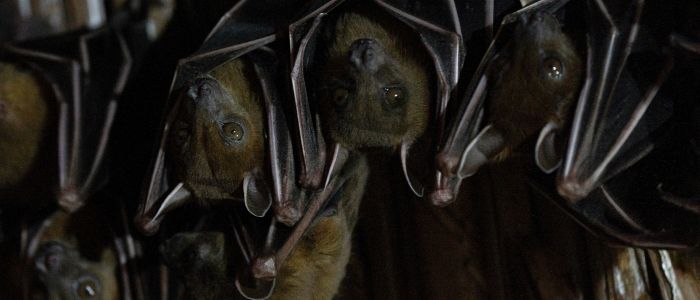Increased bat research could be the key to preventing the next pandemic

Researchers have stressed the need for increased bat research in order to predict and prevent future pandemics.
Bats, the second most diverse group of mammals on the planet, have been linked to many human disease outbreaks, including the current COVID-19 pandemic. Now, a multi-institution group of researchers has called for increased bat research in order to prevent future zoonotic disease pandemics.
If you would like to keep up to date with our content on coronavirus, you can sign up for our site here, where you can subscribe to our newsletters for free!
As described in their recent review, published in Nature Reviews Microbiology, different species of bats have been linked to recent human outbreaks of certain viruses, including SARS, MERS, Ebola, Marburg virus, Nipah virus and Hendra virus. The researchers proposed that increased research into bats molecular biology and ecology would allow us to anticipate and prepare for the next viral outbreak.
“The more researchers have looked, the more we’ve found that a lot of these emerging pathogens, at one point or another, originated in bats,” remarked lead author Michael Letko (Washington State University, USA). “Over time, we have accumulated a lot of information about some of the species of bats and some of the viruses they carry, but there are still these huge glaring holes in our knowledge.”
 No prob-llama: SARS-CoV-2 neutralized by engineered llama antibodies
No prob-llama: SARS-CoV-2 neutralized by engineered llama antibodies
Two different research groups have demonstrated that engineered llama antibodies are able to neutralize the SARS-CoV-2 virus, presenting a potential new treatment for severe cases of COVID-19.
Bats represent an extremely diverse mammalian order with over 1,400 individual species. The only mammalian order with more diversity is that of rodents, species of which have also been linked to many disease outbreaks. However, while rodents make for good laboratory animals, bats are extremely difficult to study in the lab and therefore the majority of bat research comes from the field.
Letko and his co-authors discussed how increasing bat research on both the molecular and macro level of the environment could help to predict and prevent the next pandemic. Future research should utilize the latest genetic technologies to gain greater insight into how these viruses are transmitted, which could aid the development of treatments and preventative vaccines.
Furthermore, increased knowledge of bat ecology could help to devise simple solutions for preventing transmission. For example, in Bangladesh keeping bats out of palm sap containers simply by putting lids on them helped to prevent human outbreaks of Nipah virus.
“Sometimes, you don’t need vaccines or drugs. It’s just a behavioral change that helps mitigate and reduce the contact between people and the animals,” Letko explained. “These are some of the kinds of interventions that we can take once we begin to understand what these viruses actually do.”





